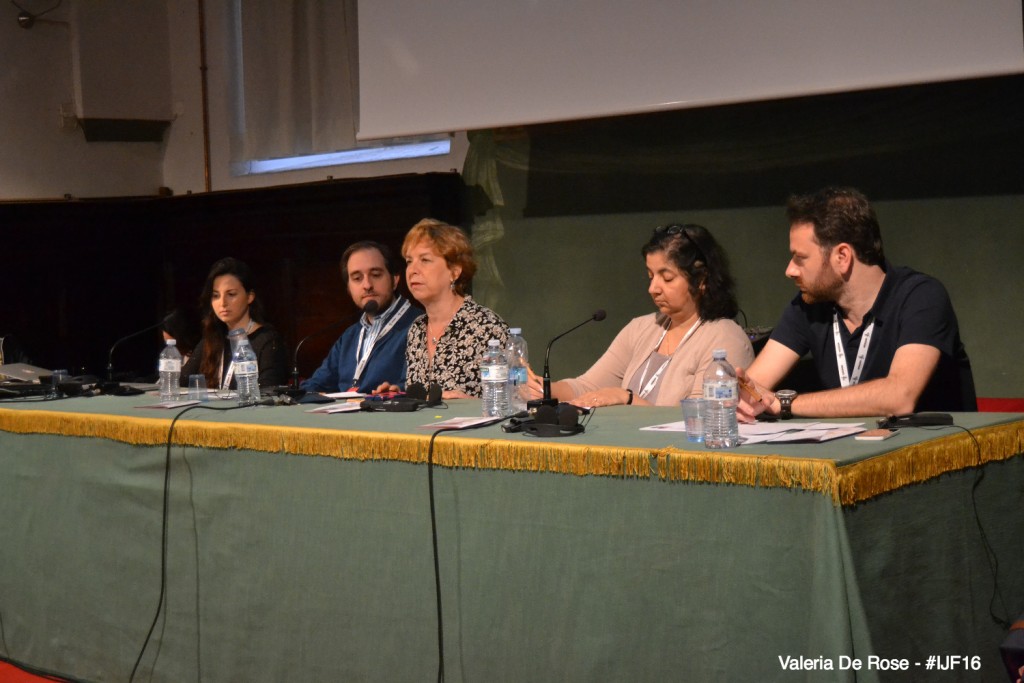
“The core fundamentals of storytelling have not changed, (…) but what has changed is the relationship with the audience – we are all in it together,” said Vivian Schiller, Executive Committee Chair at Vocativ, during a panel at the International Journalism Festival on 7 April, 2016. “The audience is now an active participant in the storytelling, and a source of the story – and [is] engaged in multiple touch-points in every aspect of the way stories are told,” she continued.
Schiller moderated a discussion about new approaches to storytelling in the digital age, including innovative technologies and methods being used to source stories, and new formats being used to visualize the stories being told.
The first to speak was Tim Verheyden, Chief of Storytelling at VRT News: his talk focused on the difficulties encountered by mainstream television when competing with online outlets.
“What we see online is pushing us as traditional journalists to tell our stories in a original way,” he said. According to Verheyden, the secret for television news is to keep viewers engaged by creating disruptive stories that shift what is known: “What can we do to gain impact with a story? Try to find a format so the story sticks even longer with the viewer.”
Starting with questioning the audience of the panel on how many of them read more than five articles on an average day, Marc Lavallee, Editor of Interactive News at The New York Times, proceeded to stress on the importance of making users an active part of the news gathering process: “By comparing the perceptions of different users, you get to understand where their initial bias stands,” he said.
What happens, on the other hand, when data is very hard to access?
Adi Kochavi, Data Story Producer at Vocativ Films, talked about the world of the Deep Web – that part of the web “not indexed by major search engines” which comprises the biggest part of the Internet – with a focus on the Dark Net, the chunk favoured by criminals, the “underbelly of society.” Exploring hidden and unconvential stories, such as one focused on bio-hacking communities all round the globe, and another exploring the issues behind printed guns and gun control in the US, is the main goal of Vocativ Films. “What we see is that these stories that are low signal, that are very very deep and far down, because of the power, the strength of technology and of the Internet, they’re slowly beginning to surface – said Kochavi – Eventually they’re going to hit the surface web, (…) and when they’re mainstream they affect all of us.”
Book databases such as NPR’s Book Concierge have also began to adopt an original or non-standard pattern to improve users engagement: by approaching the Great Reads’ categorization process in unconventional ways, audience participation has improved, and engagement time expanded.
News Executive Madhulika Sikka also looked into how interactive content can be used as an additional tool to explain content that is already on the web. As an example, she talked about the Bieber, Diplo and Skrillex Make a Hit video produced by the New York Times: “This explained to me how that sound [the song Where Are Ü Now] came about. (…) I’m sure a 5000-words article on how they came up with that record would have been interesting, but I wouldn’t have been able to understand it in quite the same way.”
Wrapping up the discussion, the panel touched the topic of balance between understanding new technologies and scaling stories. According to Mark Lavallee, the cohexistence of the two is a vital factor for such dynamic reality as digital journalism.